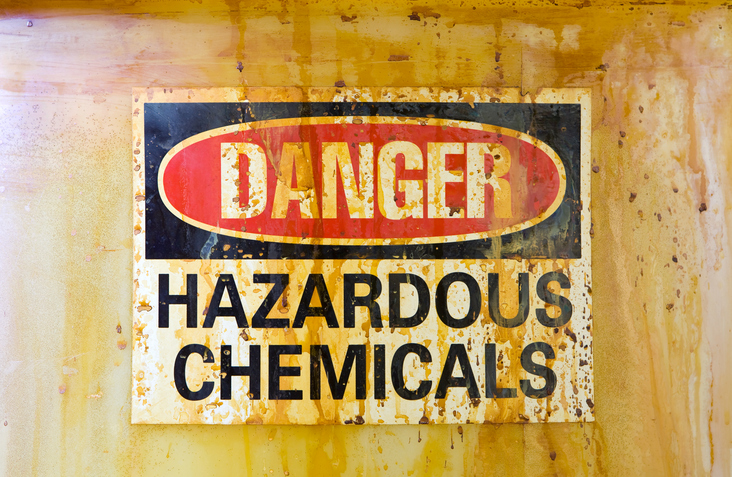According to that 2014 report, the plant in Crosby, Texas, owned by Arkema SA, stores 66,260 pounds of anhydrous sulfur dioxide. Under a hypothetical worst-case scenario outlined in the report, the gas, if released, could prove harmful for a radius of 23 miles, covering more than 1 million residents. The report was filed as part of a risk-management plan required by the U.S. Environmental Protection Agency. Plants that store certain particularly toxic chemicals are required to file such reports every five years, and this is the most recent for the Crosby facility.
Even under the worst circumstances, it is extremely unlikely that all 1 million people would be adversely affected, experts say.
A spokeswoman for the company didn't immediately respond Thursday to questions about the worst-case scenarios detailed in the EPA plan. The company hasn't said that sulfur dioxide has been released or that its storage tanks have been compromised.
Organic peroxides, which the company produces at the plant, have degraded and caught fire after flooding cut power to refrigeration systems, the company said. Organic peroxides are primarily used in the production of plastic resins, polystyrene, polyethylene, polypropylene, PVC and fiberglass.
Company officials previously have said the organic peroxides are stored at more than one location on the plant and are likely to continue to degrade as it gets warmer, but they couldn't predict how long that will take. The EPA said early Thursday that a 1.5-mile radius exclusion area had been set around the explosion site.
ulfur dioxide and isobutylene, another chemical that could impact a smaller number of people in the area if its tanks were compromised, are used to manufacture those peroxides.
"Federal law mandates that public access to certain elements of a facility's risk management plan be provided in a way that is designed to minimize the risk of harm to public health, welfare and national security," an EPA spokeswoman said.
The Wall Street Journal couldn't ascertain Thursday how close in proximity the sulfur dioxide tanks are to the tractor trailers that contain the organic peroxide, where they were stored in a failed effort to keep them cool after the backup generators lost power. Companies typically have many layers of safeguards surrounding toxic chemicals to prevent a possible breach.
Only sulfur dioxide and another substance, methylpropene, also called isobutylene, were present in high enough quantities at the Crosby plant to meet the EPA's minimum threshold for requiring a risk-management plan.
As part of that, companies are required to assess a "worst case" scenario to assess the risks of an accident at the plant.
The plans model the number of people who live within a radius where there would be serious health effects if they are exposed for up to a 30 minutes to one hour to a regulated chemical during a worst-case scenario accident.
The reports are accessible only in federal reading rooms. Paul Orum, a chemical safety expert who has written extensively about storage issues, provided the Journal with information he said was accessed in June and was the most up-to-date as of that time.
The company also reported at the time that 25 people living within 0.4 mile of the plant were at risk from isobutylene in the event of a fire.
Even if those chemicals were released, the number of people affected would almost certainly be far fewer than the one million reported as having the potential to be harmfully affected by a chemical release, experts say. The effects would depend on the wind patterns and other weather factors.
"The wind would generally only travel one direction so not all of those people could be in danger at once," Mr. Orum said.
"The multiple layers of preventive and mitigation measures in use at the Crosby facility make it very unlikely that either worst-case scenario will occur," Arkema said in its 2014 report. "In the unlikely event that such a release occurs, Arkema, Inc. has mitigation measures in place to reduce any potential impacts."
The number of people within the radius of the chemical's danger zone, however, speaks to the density of the population near the plant. Among the approximately 12,800 facilities covered by the EPA's risk-management program, fewer than 100 have populations over one million people living within the zones with potential harmful impacts from an accident, chemical safety experts said.
Some have questioned whether the company could have added other chemicals to the peroxides for the purpose of neutralizing the explosive or dangerous elements. These people say this would have been costly for the company because it would have ruined its inventory, but it would have ensured safety.
"I don't think there was a solution like that, though it would be lovely if all these problems had solutions like that," Janet Smith, director of crisis preparedness and community relations for Arkema, said Thursday.














 A chemical stored at a Houston plant that caught fire early Thursday morning presents an airborne danger to more than 1 million people if released in a worst-case scenario, according to a company risk management plan filed to the federal government.
A chemical stored at a Houston plant that caught fire early Thursday morning presents an airborne danger to more than 1 million people if released in a worst-case scenario, according to a company risk management plan filed to the federal government.